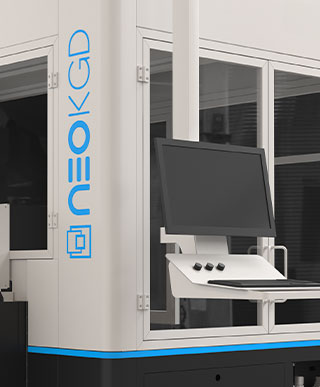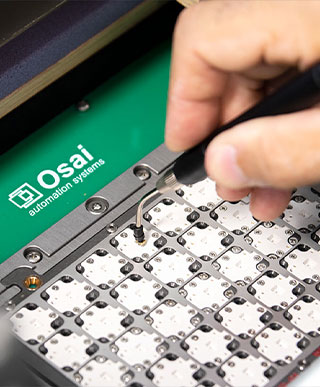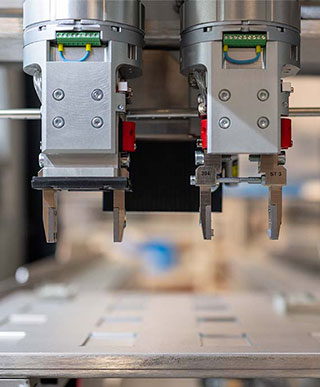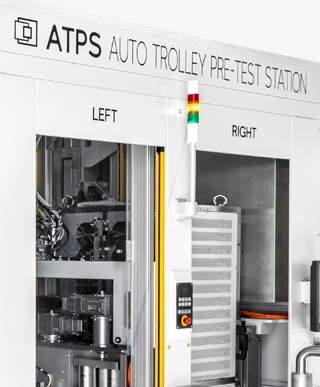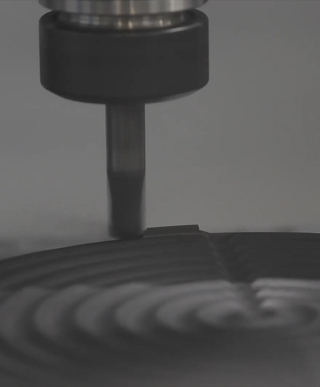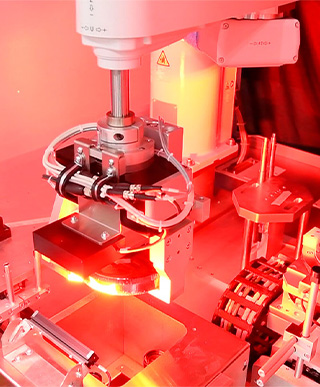Semiconductor.
Semiconductor.
Systems for empowering tomorrow’s technology today.
Semiconductors are the foundation upon which the digital age is built. As the demand for more powerful, compact, and efficient smart devices continues to rise, our systems for semiconductors manufacturing are engineered to meet and exceed the challenges of tomorrow’s technology landscape.
A semiconductor is a material that has an electrical conductivity value falling between that of a conductor, such as copper, and an insulator, such as glass. Its resistivity generally falls as its temperature rises; metals behave in the opposite way.
Semiconductors are everywhere and we can’t live without them: the mobile phones we use to communicate, the computers we use to work, the cars and planes we use to travel, the military systems, electronic devices and the machines that diagnose and treat illnesses.
Semiconductors have been studied for centuries. In 1833, Michael Faraday was the first to document the phenomenon of electrical semiconductivity with experiments on silver sulfide. Nowadays, the most widely used are germanium and silicon.
The industry is characterized by a high rate of technological innovation, which concerns both the size of the chip, with the aim of continuous miniaturization of elementary chip components, and the size of the diameter of a wafer (slice of silicon containing many chips), which has increased considerably over time to reduce production costs.
How is a Semiconductor manufactured? Semiconductor devices are built up in a series of nanofabrication processes performed on the surface of wafer, substrates made from highly pure single crystal silicon.
Semiconductors are the basic materials needed to make chips and integrated circuits.
A chip is a carrier made of semiconductor material on which multiple electronic components are integrated.
The chip manufacturing process involves hundreds of steps, and they can have up to 100 layers, which need to be aligned on top of each other with overlay, nanometer precision. The chip production process can be divided into three main stages: planning and design, manufacture, and assembly.
A key challenge facing the semiconductor industry is its inability to catch product defects early in the production phase.
Osai products offer our customers machines for testing and calibration of MEMS sensors and power devices; machines for final testing and acceptance of power modules; burn-in-test automation systems with loading, unloading, pre-testing and visual inspection functions; systems for automatic assembly of power modules, including Laser marking; and SiC solutions.
Systems for empowering tomorrow’s technology today.
Semiconductors are the foundation upon which the digital age is built. As the demand for more powerful, compact, and efficient smart devices continues to rise, our systems for semiconductors manufacturing are engineered to meet and exceed the challenges of tomorrow’s technology landscape.
A semiconductor is a material that has an electrical conductivity value falling between that of a conductor, such as copper, and an insulator, such as glass. Its resistivity generally falls as its temperature rises; metals behave in the opposite way.
Semiconductors are everywhere and we can’t live without them: the mobile phones we use to communicate, the computers we use to work, the cars and planes we use to travel, the military systems, electronic devices and the machines that diagnose and treat illnesses.
Semiconductors have been studied for centuries. In 1833, Michael Faraday was the first to document the phenomenon of electrical semiconductivity with experiments on silver sulfide. Nowadays, the most widely used are germanium and silicon.
The industry is characterized by a high rate of technological innovation, which concerns both the size of the chip, with the aim of continuous miniaturization of elementary chip components, and the size of the diameter of a wafer (slice of silicon containing many chips), which has increased considerably over time to reduce production costs.
How is a Semiconductor manufactured? Semiconductor devices are built up in a series of nanofabrication processes performed on the surface of wafer, substrates made from highly pure single crystal silicon.
Semiconductors are the basic materials needed to make chips and integrated circuits.
A chip is a carrier made of semiconductor material on which multiple electronic components are integrated.
The chip manufacturing process involves hundreds of steps, and they can have up to 100 layers, which need to be aligned on top of each other with overlay, nanometer precision. The chip production process can be divided into three main stages: planning and design, manufacture, and assembly.
A key challenge facing the semiconductor industry is its inability to catch product defects early in the production phase.
Osai products offer our customers machines for testing and calibration of MEMS sensors and power devices; machines for final testing and acceptance of power modules; burn-in-test automation systems with loading, unloading, pre-testing and visual inspection functions; systems for automatic assembly of power modules, including Laser marking; and SiC solutions.


